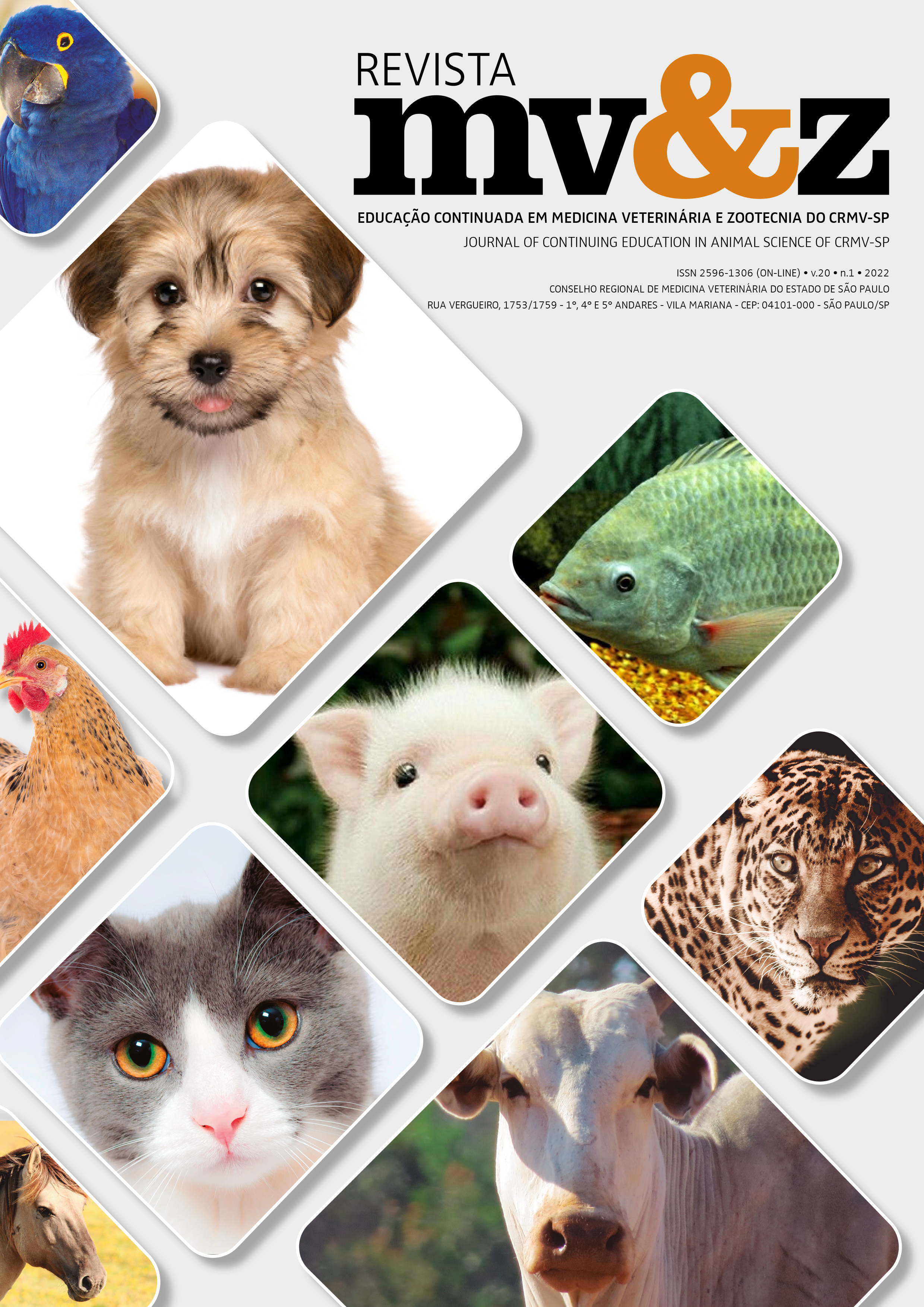Intoxicação de cães por maconha: sinais clínicos e tratamento
Conteúdo do artigo principal
Resumo
Intoxicações por drogas recreativas como Cannabis sativa, comumente conhecida como maconha, estão cada vez mais presentes nas clínicas de atendimento veterinário. A Cannabis contém mais de 500 compostos diferentes e mais de 80 canabinoides conhecidos; destes, o delta-9 tetrahidrocanabinol (THC) é o mais psicoativo e responsável pela maioria dos sintomas de intoxicação. Os canabinoides são substâncias exógenas extraídas da Cannabis e se ligam aos receptores CB1 e CB2 do sistema endocanabinoide. Em cães, dentre os sinais clínicos de intoxicação mais presentes destacam-se: agitação, ataxia, midríase, aumento da sensibilidade ao som, hiperestesia, sialorreia, distúrbios neurológicos, espasmos musculares e início agudo de incontinência urinária. Muitas vezes o diagnóstico de intoxicação por maconha é difícil, principalmente porque os tutores resistem em admitir a exposição a drogas ilícitas com receio das implicações legais. O médico-veterinário deve ganhar a confiança do tutor do animal para que o diagnóstico possa ser realizado precocemente e iniciado o tratamento mais adequado para a situação. O tratamento inclui monitoramento clínico, cuidados de suporte, administração de fluidos intravenosos, administração de carvão ativado, indução de vômitos, administração de antieméticos, suporte térmico (aquecimento/resfriamento) e monitoramento da pressão arterial. Os médicos-veterinários são os principais responsáveis pela educação dos tutores nessas circunstâncias, sendo de grande importância enfatizar para os tutores manterem agentes tóxicos fora do acesso dos animais.
Detalhes do artigo
Seção
1. Autores mantém os direitos autorais e concedem à revista o direito de primeira publicação, com o trabalho licenciado sob a Creative Commons Atribuição-NãoComercial-SemDerivações 4.0 Internacional
2. Autores têm autorização para assumir contratos adicionais separadamente, para distribuição não-exclusica da versão do trabalho publicada nesta revista (ex.: publicar em repositório institucional ou como capítulo de livro), com reconhecimento de autoria e publicação inicial nesta revista.
3. Autores têm permissão e são estimulados a publicar e distribuir seu trabalho online (ex.: em repositórios instituicionais ou na sua página pessoal) a qualquer ponto antes ou durante o processo editorial, já que isso pode gerar alterações produtivas, bem como aumentar o impacto e a citação do trabalho publicado (Veja O Efeito do Acesso Livre);
